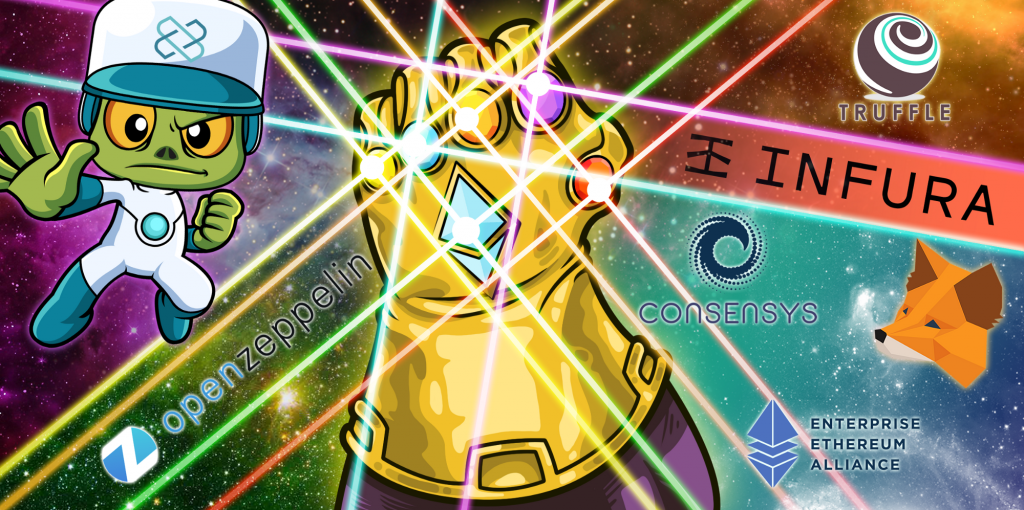Games Will Be the Catalyst for Blockchain Mass Adoption
By Patrick Hall
We’ve Been Hyper-focused on Blockchain Games at Loom Network — Here’s Why
What’s up everyone!
The past 2 months have been extremely busy here at Loom Network.
If you’ve been following us, you’ve noticed that our announcements have been largely focused around our blockchain-based collectible card game, Zombie Battleground, and the Kickstarter we used to promote the benefits of blockchain games to over 12 million mainstream gamers.
But this recent focus in our announcements around a single game has caused some people to ask:
Why do you guys keep talking about this game?!
What is Loom Network, an Ethereum scaling solution, or just a game company?!
So I wanted to take the time to clarify our long-term vision at Loom Network… and why games play such a big role in it.
Our Long-Term Vision At Loom Network Hasn’t Changed: We Want to Enable Million-User DApps on Ethereum.
We’ve been saying since December 2017 that our goal is to see million-user DApps running on Ethereum.
And that vision hasn’t changed.
Although we often get lumped into the category of a “blockchain games” company, the truth is you can build ANYTHING on Loom Network.
You could build the next blockchain-based Facebook.
You could build a Decentralized Exchange (DEX) with a UX as smooth as Binance, but with user funds secured by Plasma and transactions fully auditable.
You could build a massive decentralized data sharing platform for enterprises.
It just so happens that we’re focusing on games first, because we think a game will be the first “killer DApp” to reach MILLIONS of users.
And to help you understand WHY we’ve come to that conclusion, I need to take you on a journey.
You see, in the 12 months since we started Loom Network, we’ve learned a lot about this industry. And although our vision of million-user DApps on Ethereum has not changed, our understanding of what we need to do to get there has.
And what we’ve realized is, not only do we think a game will be the FIRST “killer DApp” — but we think games will actually be THE KEY to onboarding millions of new users onto Ethereum and acquiring their first cryptocurrency.
By the end of this post, I hope you’ll not only have a better understanding of why we’ve been pouring so many of our team resources into a game and its marketplace, but also agree that games are simply THE best path the blockchain industry has toward hitting mainstream adoption in the immediate future.
The next big thing will start out looking like a toy.
–Chris Dixon
Ready? Then let’s dive in.
To start off with, we need to talk about an inconvenient truth…
Blockchains Don’t Just Have a Scaling Problem — They Have a USER ADOPTION Problem.
When we first started Loom Network one year ago, everyone was talking about scalability.
It seemed like everyone was just waiting around for an Ethereum scaling solution to come along — then once that was solved, we would magically see a Cambrian explosion in large-scale blockchain applications.
But…
What we’ve come to realize since starting this project is that scalability is actually not the biggest problem Ethereum faces.
User adoption is.
User Adoption: How Close Are We to One Million Users?
Let’s look at some numbers.
Below is a snapshot of the number of Daily Active Users (DAU) in the past 24 hours of THE MOST POPULAR applications on Ethereum:
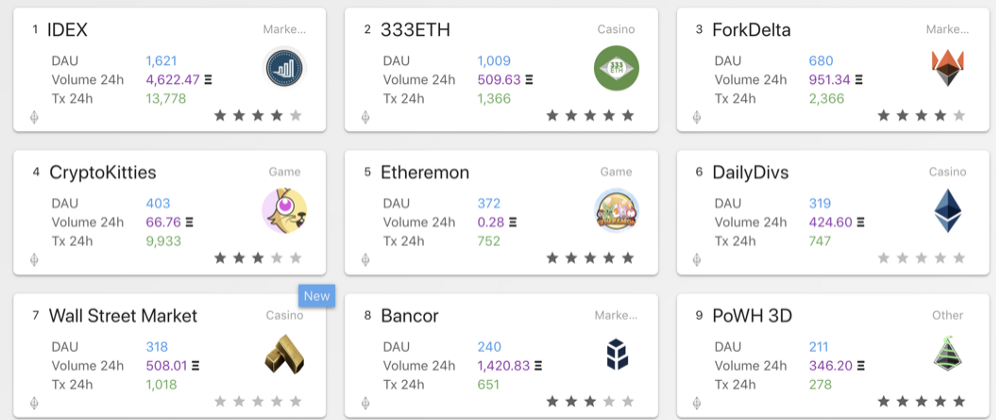
The first interesting thing to notice here is that the most actively used DApps fall largely into three major categories:
- DEX / Marketplace: IDEX, ForkDelta, etc.
- Gaming: CryptoKitties, Etheremon, etc.
- Gambling / Casino: 333ETH, DailyDivs, etc.
But the second, and more important thing to notice:
Currently, even the two most popular DApps on Ethereum have only one or two thousand Daily Active Users.
If you add up ALL the 100+ active DApps on dapp.review combined, it’s still less than 10,000 users in total who are interacting with an Ethereum DApp on a given day.
For context and comparison, Facebook has around 1.4 billion DAU, and Twitter 157 million. PUBG Mobile, just one mobile game out of thousands, has 10 million DAU.
The largest DApps on Ethereum are still TINY in the grand scheme of things.
This is not meant to disparage Ethereum (which I previously opined will be the backbone of Web 3.0), or to marginalize the work being done by the teams who created these DApps. These teams are pioneers who are pushing the envelope with what is currently possible.
My main point in bringing up these numbers is to emphasize the fact that currently with less than 10,000 daily users between all Ethereum DApps combined, we are still very, very far from mainstream adoption.
Major Roadblocks Toward Mainstream Adoption
Scalability aside, there are two major problems preventing blockchain applications from gaining mainstream popularity:
- Lack of “killer DApps” — applications that are good enough to incentivize millions of users to really want to use them.
- Friction — UX issues that make DApps significantly harder to use than their centralized counterparts. (Users must first acquire ETH from an exchange, then install Metamask, then transfer the ETH to Metamask, then sign a transaction and pay a gas fee for EVERY action inside the DApp… etc.)
These two factors can be tied together using something called the Fogg Behavior Model, which is often used in marketing circles to optimize conversion rates for a particular desired user action. (E.g. Downloading your application, signing up for a free trial of your SaaS, or purchasing your product).
The Fogg Behavior Model
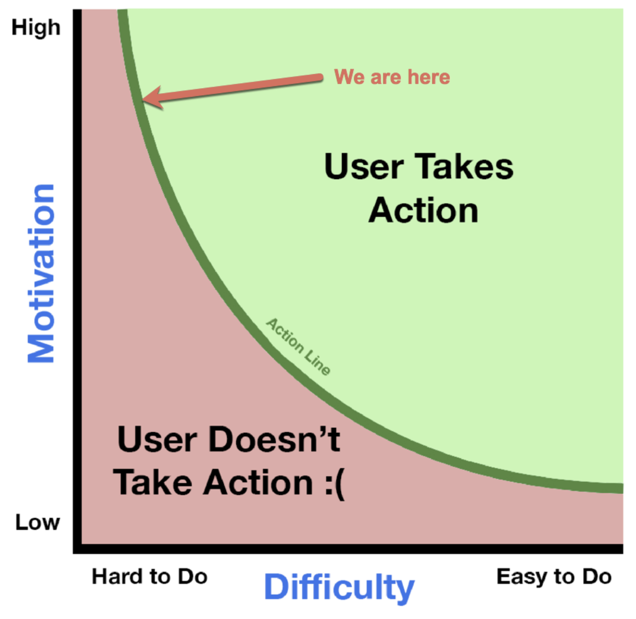
For those of you who see mathy stuff and are already recoiling in horror, don’t worry.
What the graph above basically says is this:
If your application is difficult to use, it will filter out all but the most motivated users.
And the easier your application is to use — the more casual users will be willing to give it a try on a whim.
In short, if we want to get millions of users using DApps, we have two options:
- Reduce friction as much as possible, by improving the UX of blockchain applications until they’re just as easy to use as regular applications.
- Build more “killer apps” on the blockchain that appeal to millions of strongly motivated users.
Now, you could view this as an “either/or” approach to solving the problem.
But here at Loom Network, we don’t like to pussyfoot around and do things half-assed ?
So we decided, “We’re just gonna do both of ‘em.”
I’ma call it, “Loomy’s 2-step program to blockchain mass adoption.” ?
Allow Loomy to explain.
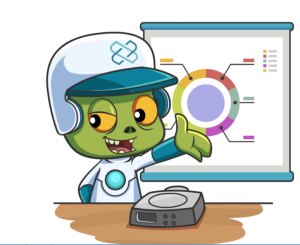
Step 1: Reduce Friction — Make Blockchain Applications Just as Easy to Use as their Centralized Counterparts.
Scalability aside, this has been our major focus at Loom Network over the past year.
Using DPoS sidechains to Ethereum, we’ve been able to build user-facing DApps that actually look and feel identical to traditional applications, yet still have the benefits of running on the blockchain.
What do I mean?
You can try for yourself at DelegateCall.com. Sign up, ask a question, answer other people’s questions, and earn ERC20 tokenized karma when your posts get upvoted.
Yet if we didn’t tell you, you would have no idea just from using it that the entire app runs on the blockchain. It looks and feels exactly like Quora, or any other web app.
Or take the game we’re building, Zombie Battleground.
Our alpha users can download the game from the app store onto their mobile devices, and it looks and feels exactly like any other mobile game.
Yet there is no centralized server and the entire game runs on the blockchain.
We’re still constantly working on improving parts of the UX even further — and making it even easier for other developers to build DApps just like this on the Loom SDK.
But we’re basically already there: we’ve successfully built multiple DApps with a totally fluid UX.
With the Loom SDK, it is now possible to build DApps that are just as easy to use as traditional applications, massively reducing UX friction and opening the gateway for mainstream adoption.
But Loomy ain’t done yet!
Step 2: Build DApps that appeal to a group of MILLIONS of motivated users
So now that we’ve solved the UX issues that have traditionally made DApps difficult to use, that means millions of users are going to suddenly flow in and start using them yesterday, right?
Not so fast.
Those of you reading this are the cool kids. We’re the early adopters.
We philosophically believe to the core that blockchain applications represent something revolutionary, and for us, the word “decentralization” is enough to get us all excited and giddy and blabbering maniacally to anyone within earshot who happens to make eye contact.
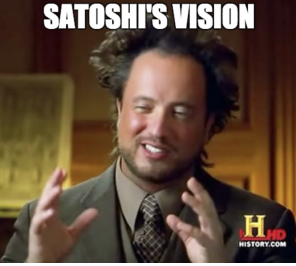
But for the majority of mainstream users, this isn’t the case.
They might conceptually understand why decentralized apps are better. But simply saying, “It’s Facebook — but decentralized!” doesn’t seem to be a strong enough value proposition to get people to jump ship from a centralized Facebook that, despite its many shortcomings, more or less works just fine.
For the majority of mainstream users, the promise of decentralization, in itself, is not enough.
So what kind of DApps can we build that we know millions of people DO care enough to use?
Why, I’m glad you asked!
Because the answer here is — you guessed it — games.
Games: The Missing Link
Peter Thiel has famously said that to build a successful startup, you need to solve some problem 10x better than any other existing service.
That’s really hard to do. And it’s why we haven’t seen any “killer DApps” yet.
We’re still waiting for the next great visionary to come along and show us what the blockchain allows us to do 10x better than any centralized service — or what it enables that has never been possible before.
Keep in mind we’re still in the super early days of the technology. In 1994, people still had no idea wtf this “Internet” thing was and how significant of an impact it would have on the world we live in.
So just like it would have been hilariously wrong to write off the Internet in 1994, it would likewise be foolish to write off Ethereum just because it’s been around for 3 years now and we’re still waiting for that killer DApp.
But while we’re waiting — in the meantime we have games.
Games are unique among applications, in that users don’t need to be strongly incentivized to download and play a new game.
A game doesn’t need to be 10x better than any game that came before it. As long as the game is marketed well and looks somewhat fun, there’s a huge user base (2.2 billion gamers worldwide) willing to give it a try, even paying money to do so (1.0 billion paying users).
According to one survey:
- 40.6% of gamers download 2–3 new games per year.
- 27.3% download one game per month.
- 12.4% download one game per week.
- 4.4% download new games every single day.
4.4% of 2.2 billion is 96 million users.
That means there’s an audience of 96 million hyper-active gamers who are downloading and trying 300+ games every single year.
Games, unlike apps, don’t have to do something 10x better than any previous app and convince users to jump ship. Gamers are always looking for new fun games each month, and will try them on a whim.
And the Blockchain DOES Bring Benefits to Online Gaming
With the friction removed from the DApp onboarding experience, gamers will be able to download games like Zombie Battleground on the app store and start playing them without even knowing what the blockchain is.
But the thing is, the game being on the blockchain does bring benefits to the end user that most people aren’t aware of yet.
Benefits like:
- True ownership of in-game items that players can buy and sell freely, enabling robust in-game economies.
- Provable and auditable item scarcity and fairness in drop rates.
- Infinite modability — games can be built that allow developers to build and upload their own alternate game modes for all players to use. Developers can actually modify and extend server-side logic, allowing for infinitely expandable game worlds driven entirely by community development.
Pretty cool stuff.
But simply put — when you spend money to buy an item in a game, it’s pretty obvious that you would want to be able to do whatever you want with it, including selling it to someone else.
If nothing else, when you quit the game, you could sell all your items to another player to make back some of the money you invested — just like you could with a physical card game like Magic: The Gathering or Yu-Gi-Oh.
The only reason online games don’t currently enable this is because limiting the resale of items allows game companies to maximize profits by forcing every single player to buy the same item directly from the company.
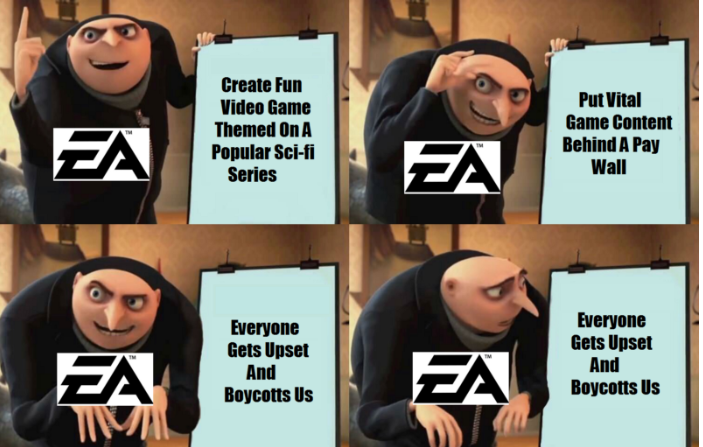
Companies preventing players from reselling items they paid money for is clearly a bad deal from the players’ perspective — but players put up with it because there’s currently no alternative.
The ability to truly own and freely resell their items is a benefit many gamers don’t even know they want yet. But after they experience it, they may come to demand it from all games they play in the future.
In this way, we can naturally introduce millions of people to the blockchain.
After they’re hooked on the game, they’ll learn they can sell their items for real money. With a properly-designed game economy, some players may even be able to make a lot of money.
And not surprisingly, users who are earning real money will have a lot more motivation to learn about the blockchain and its benefits.
In Fogg’s model, we’re getting them onboarded with as low friction as possible, and slowly increasing their motivation to want to do well in the game — then with that higher motivation, we get them to take the next step into using the advanced blockchain features.
And after experiencing it, they may even come to demand in-game assets be stored on the blockchain from all games in the future.
Games: The Trojan Horse to Cryptocurrency Mass Adoption
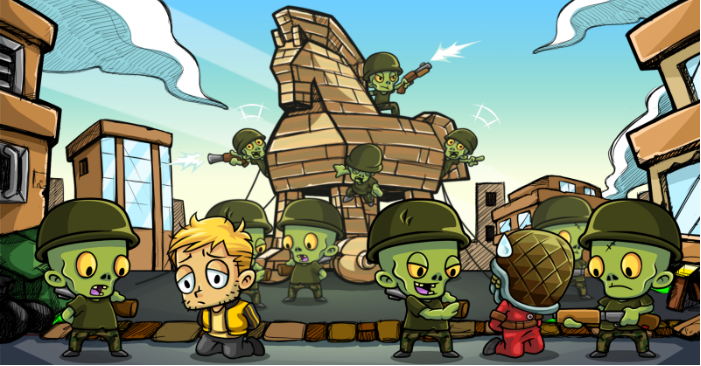
What’s even cooler here is that games may be the first way millions of users acquire their first cryptocurrency.
Crypto on-ramps are currently very limiting and difficult to use.
If you’re in the US, you can use something like Coinbase, which is probably as easy as it gets. But even then, you have to link a phone number, scan and send them your passport, link your bank account…
Getting set up to buy your first cryptocurrency is cumbersome.
But let’s look at what the process might look like with blockchain games.
A user downloads a game because it looks fun. They start playing, they get hooked, and 10 hours into the game, BOOM, a monster drops a super rare item.
The flow in the game informs them, “Hey, did you know you can sell your rare items to other players on our massive P2P marketplace?”
The player heads to the marketplace, which is kind of like a blockchain-based eBay for digital in-game items, and puts their item up for sale — choosing whether they want to receive ETH, LOOM, BTC, or a stablecoin like DAI linked to their home country’s currency.
Another player pays for it using a cryptocurrency of their choice, and the marketplace’s liquidity network automatically converts it to the seller’s chosen currency.
Now the seller has acquired their first cryptocurrency simply by playing a game — without needing to do KYC or even needing to have a bank account.
Think of the implications of this for adoption of cryptocurrency worldwide, especially in poorer countries where bank accounts aren’t commonplace.
Grinding for rare items in a free-to-play mobile game that can then be sold on a P2P marketplace may be the way millions of users in third-world countries acquire their very first cryptocurrency.
These users are now onboarded, familiar with the blockchain and digital ownership, and able to use their cryptocurrency to interact with other game marketplaces and DApps.
Games As a Driver For Blockchain Technology
It’s not all fun and games — games have serious technical requirements.
The challenge of building a game fully on the blockchain that can handle hundreds of thousands of concurrent users has forced us to push our technology to its absolute limits.
We’ve learned more about the scalability limitations of blockchains and how to overcome them from building a single game than we would have from yearsof writing technical whitepapers and theorizing.
Not only that, but the UX in games has to be really, really good.
Games are supposed to be fun, and having a clunky UX totally kills the mood.
By the end of 2018, we will have totally solved the UX issues faced by blockchain games — making them feel just as seamless as normal mobile games.
And if we can get the UX that smooth on a mobile game, making it work for traditional web applications will be child’s play.
Our focus on building out the infrastructure and UX specifically for games is the challenge that has driven massive innovation in our tech — putting us way ahead of the curve.
This is technology that can be used to run any type of application on Loom Network — so you can think of building our tech for games like stress testing it to run large-scale applications that have the most strenuous requirements.
Games as a Key Piece in Our Long-term Strategy: Becoming the Most Widely Utilized Blockchain in Existence
Blockchain infrastructure projects love to boast about the technology and metrics like TPS (Transactions Per Second).
But at the end of the day, the chain that has the most Daily Active Users will win out in the long-term.
At Loom Network, we’re not interested in building ghost towns that look impressive on spec sheets. We’re interested in having Loom Chains become some of the most widely utilized blockchains in the world.
And we believe being the first application platform to gain 1 million DAU — or even 100,000 DAU to start — is the best way to show the world what our tech is capable of, securing our place in developers’ minds as the de-facto chain they can trust to deploy their applications.
By the way, did we mention assets on Loom chains can be secured by Plasma Cash, providing the full security of Ethereum IN ADDITION to being super-scalable and having a fluid UX? ?
Not only that, but then we’ll also have a strong core audience of passionate users who we can funnel into new games and products.
Steam didn’t become the largest digital distribution platform for PC gaming out of nowhere — Valve already had over a million users playing Counter-Strike who they were able to funnel into the Steam platform from day one. And once they had all those users authenticated, other games wanted to launch on Steam because that’s where the user base is.
Once you have that ONE core app that onboards a million users, everything compounds on itself and snowballs from there. Thanks, Metcalfe.
And for all the reasons detailed above, we think games are the quickest way to get there.
Paving the Way for Other Game Companies: Let’s Show Them What’s Possible
We think once gamers experience the benefits of blockchain games, there’s going to be a strong and growing demand — which will lead to an explosion in blockchain games.
But right now, all this blockchain stuff is really new. So large companies are unlikely to take the plunge into the unknown, when they already have a profit model that’s working for them.
Someone needs to show them a new working model, and demonstrate that there’s REAL DEMAND from users.
After we publicly launch Zombie Battleground at the end of this year, we can use it as a case study to get other mobile game studios on board.
We can show them a new profit model and a growing hungry user base who wants more — and get them to follow suit.
And this is why we decided to move forward with building Zombie Battleground ourselves.
Rather than continuing to build only infrastructure and waiting for someone else to build a killer DApp, we figured, why not do it ourselves and pave the way?
You never change things by fighting the existing reality. To change something, build a new model that makes the existing model obsolete.
–Buckminster Fuller
And that, my friends, is why we have been putting such a large focus on games.
What’s Coming: PlasmaChain, Validators and Staking, the Loom Marketplace/DEX, and More!
If you made it this far, you now have further insight into our core company thesis — and how we think the future of the blockchain will unfold — than pretty much anyone else in the world.
Want a deeper look into what we’re up to?
We recently posted an updated roadmap that details everything that’s coming from Loom Network over the next 3 months.
Well, not everything… In typical Loom Network fashion, we have at least one major surprise coming in the next two months ?
And for the gamers among you…
The public beta of Zombie Battleground is coming by the end of this year, at which point it will be free to download for everyone on the App Store and Google Play.
But we’ll have opportunities before that for you to get into the alpha and start buying card packs (and start stocking up on those super-rare Limited Editions!) within the next couple weeks.
If you’re interested, head on over to loom.games and sign up for the waiting list. (Just click the ‘Play Now’ button.)
I hope to see you all on the Battleground! ?

